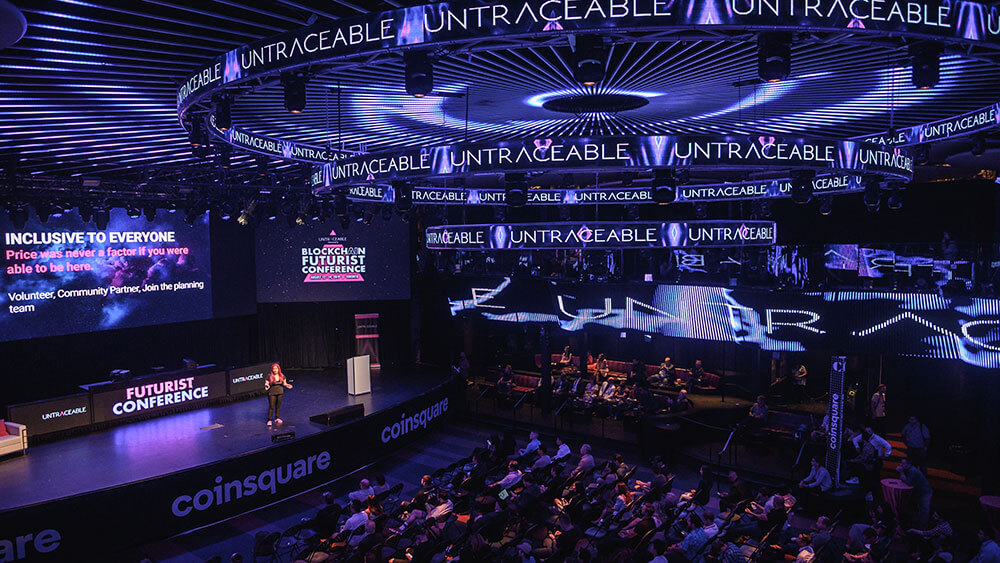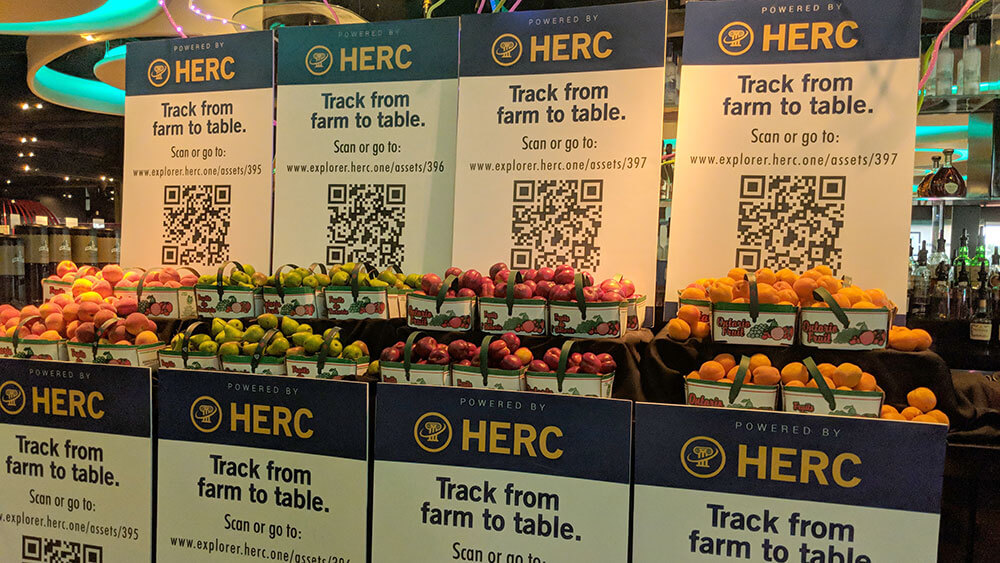
Untraceable found Tracy Leparulo wanted to make the 2019 Blockchain Futurist Conference the most blockchain-enabled conference in the world.
For all the buzz about blockchain on the enterprise level — IBM and Walmart are just two major companies exploring its possibilities — most of us couldn’t articulate the implications of this decentralized approach to data management if our lives depended on it. Tracy Leparulo, founder of Untraceable, an events and marketing company for blockchain and cryptocurrency, doesn’t think that we should have to spend hours trying to comprehend the inner workings of blockchain in order to grasp how it works. Moreover, she told Convene, the ideal place to help people understand what blockchain can do is at face-to-face events.

Tracy Leparulo
Since 2013, Leparulo has organized a range of hackathons, developer conferences, and other educational events about blockchain, but she set an ambitious goal for the 2019 Blockchain Futurist Conference: to design the most blockchain-enabled conference in the world. She wanted the 2,500 conference participants, in addition to learning and talking about blockchain, to see it in action at Toronto’s Rebel Entertainment Complex & Cabana, Aug. 12–14.
Some came to the event already blockchain experts, but there were also novices who took advantage of the introductory courses in the conference’s Blockchain Bootcamp. In addition, attendees worked in a wide range of industries, including health care, education, banking, and manufacturing. To make sure that everyone, regardless of background or blockchain experience, could see the technology brought to life, Leparulo started with a common denominator: the food they consumed on site.
From Farm to Phone
Using a supply-chain-management platform called HERC, Leparulo set up a way for attendees to track via QR codes the journey of six items on the event menu — pears, peaches, plums, cauliflower, broccoli, and eggs. With a simple scan of the QR code, attendees could swipe through time-stamped photos of the farm where the food was grown and the truck that delivered it. “From the farm to the loading dock, when they loaded it on the truck, where it was prepped,” Leparulo said, “it was about six touch points.”
The initiative not only demonstrated the event’s commitment to providing locally sourced items, it also served as an example of the important work blockchain can do outside of the conference environment: to make the food chain safer. Leparulo referenced a recent E. coli outbreak linked to romaine lettuce. The inability to locate the initial source of the affected lettuce could have been attributed to someone deleting data in order to avoid association with the outbreak. With blockchain technology, tracking the pathway from farm to table is simply a matter of fact, Leparulo said. “It is impossible to hack by anyone, no matter how hard you try.” The food sector, she added, “is one of the first industries to really have a need for blockchain.”

At the 2019 Blockchain Futurist Conference, attendees could trace the food on site to its source using QR codes.
Debit and Credit
When attendees arrived on site, they could make payments using up to 50 different cryptocurrencies — payment systems powered by blockchain — for everything from those blockchain- monitored pears to helicopter rides over the city.
Approximately 20 percent of attendees had paid their registration in advance using cryptocurrency. Since the valuation of those currencies is constantly changing (the valuation of one Bitcoin decreased by $9 in the time it took to write this paragraph), the conference’s payment system was built to accommodate those fluctuations.
“The system has gotten so advanced now that if you bought in Bitcoin” or another cryptocurrency, Leparulo said, “it automatically translated it to the amount in U.S. dollars. You don’t actually ever see yourself paying Bitcoin. On the back end, the [system] automatically changes it.”
Attendees also could invest in cryptocurrency. An on-site Bitcoin ATM, rather than dispense bills, worked so that users could purchase Bitcoin by inserting cash or using a debit card. The machines are linked to the Bitcoin exchange and convert an equivalent amount of the cryptocurrency into an individual’s Bitcoin wallet.
While they were investing in their Bitcoin accounts, attendees could also contribute to a different kind of currency which came at no financial cost. It was part of a new initiative that Leparulo calls PlanIT NOW (the NOW stands for “new open world”).
“Our society penalizes people for doing things that are bad,” Leparulo said. At the conference, she wanted to incentivize participants “to do things that are good. If you recycled, if you went and said ‘thank you’ to a volunteer, if you went to a community booth upstairs, if you did any of these things that help the environmental, social, and economic part of the event, then we gave you points. And these points were something called ‘PINS’ PlanIT Now tokens. We gave away [digital] tokens to people that contributed good to the event.” (See “Token of Appreciation” below.)
As for the future of blockchain adoption, Leparulo looks to face-to-face events. But she finds that the lack of understanding about the blockchain industry also applies to the meetings industry. “When I tell people I’m in events, they ask, ‘Are you a wedding planner?’ But I find that even calling it an industry is unfair,” she said: Every sector has meetings or events.
Leparulo thinks that if those in the blockchain space really want these new business models to work, the technology needs to be showcased at events. “That’s the key part of it.”
David McMillin is an associate editor at Convene.
Token of Appreciation
Untraceable’s Tracy Leparulo plans for digital PlanIT NOW tokens — distributed to attendees at the Blockchain Futurist Conference who demonstrated a sense of environmental or social responsibility — to have a lifespan beyond the event. That may take the form of a discount for registration fees at future Untraceable events if the tokens are used for payment, she said. “It would make it more like a fair where it’s almost free entry, but you pay for things on site.”
Leparulo thinks the token scheme is a winning scenario for sponsors, too. She reflected on how much money she has wasted on motivating attendees to visit exhibit booths and sponsor areas at past events, particularly with swag. “It actually might be more effective, cheaper, and it helps the environment more if you can incentivize people by giving them a token.
I literally give you a dollar if you come” to a particular booth, Leparulo said, which is better than “giving you a $3 umbrella that might break.”
